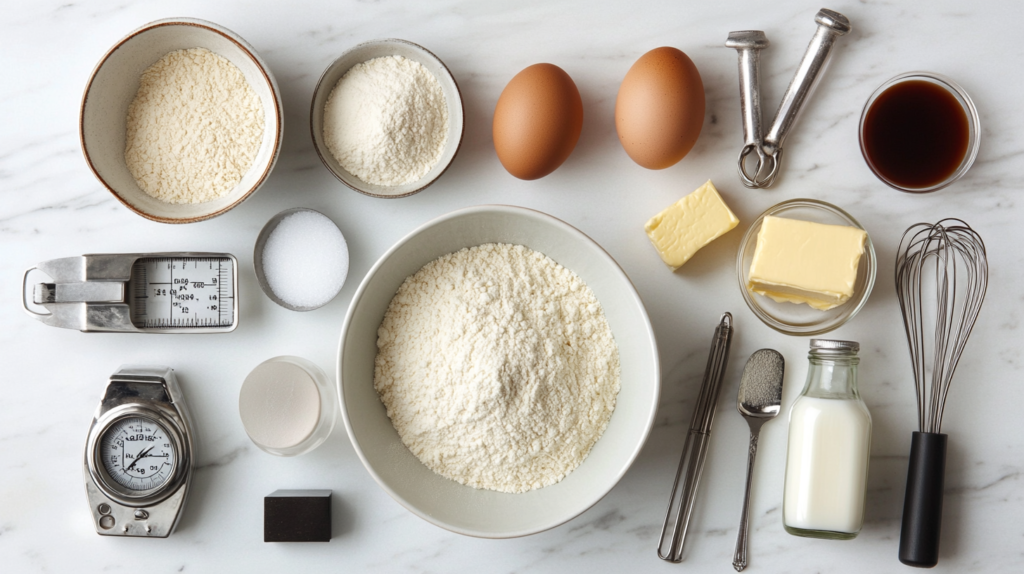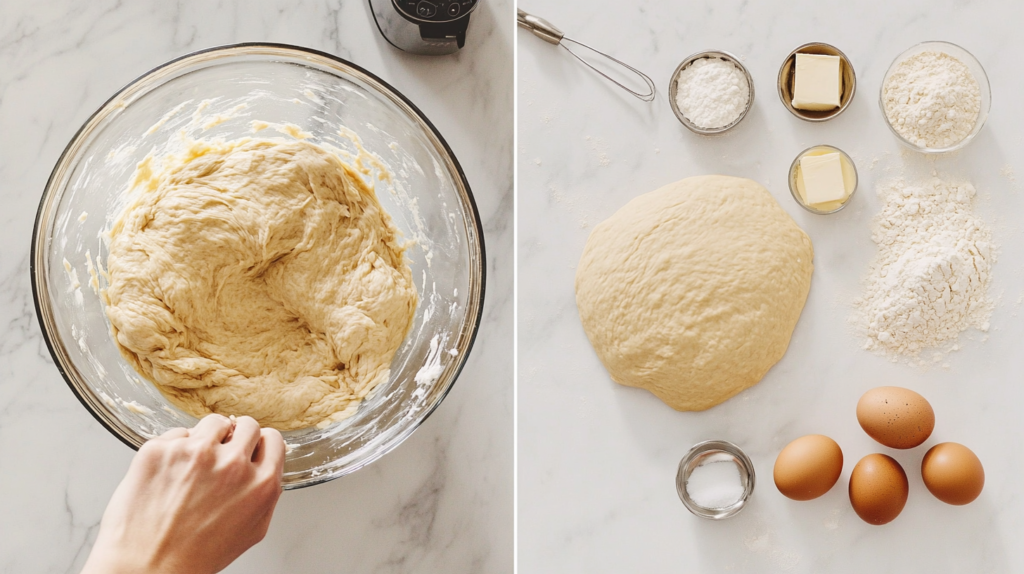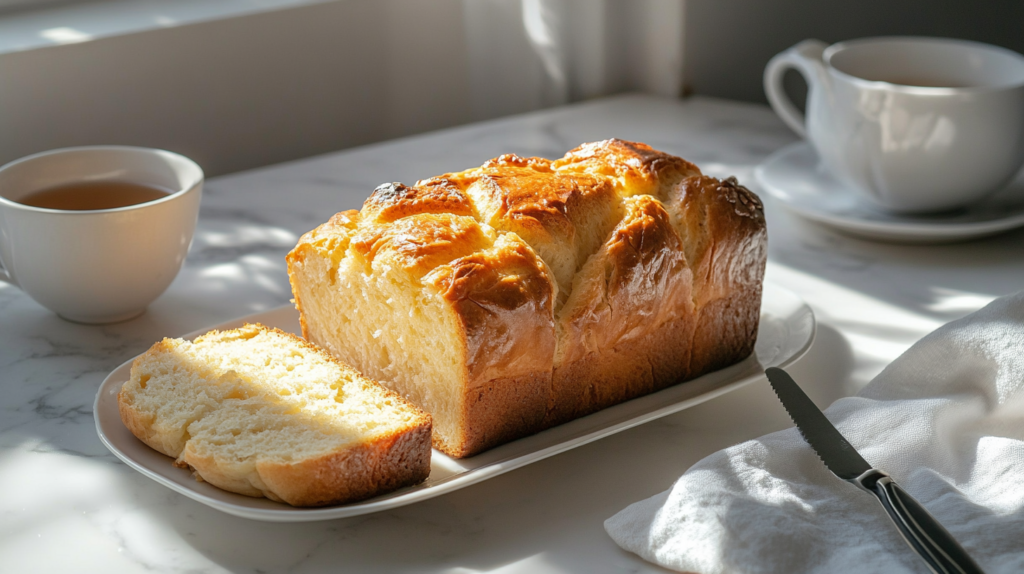Sweet bread isn’t just a recipe — it’s a mood. It’s the smell that fills your kitchen on a cozy Sunday morning. It’s the bite that’s soft, fluffy, slightly sweet, and perfect with your favorite cup of tea or coffee. Whether you’re a seasoned baker or just venturing into the world of homemade doughs, mastering a classic sweet bread recipe is one of the most satisfying (and delicious) skills you’ll ever pick up.
In this guide, we’re going deep into the warm, golden world of sweet bread. You’ll get a tried-and-true base recipe, explore delicious variations from around the globe, and learn how to fix the most common baking mistakes. Ready to roll up your sleeves and bake some joy?
“Sweet bread is what happens when comfort food meets tradition — and they bake something beautiful together.” 🍞💛
What Is Sweet Bread?
The History and Origins of Sweet Bread
Sweet bread has been around for centuries, evolving through different cultures and kitchens. It’s a soft, enriched bread that usually contains eggs, sugar, and milk — all the good stuff. From French brioche to Mexican pan dulce and Italian panettone, nearly every corner of the world has its own take on this fluffy treat.
Historically, sweet bread was a celebration food, made for holidays, weddings, or religious events. Today, it’s become an everyday delight, easily adaptable and endlessly enjoyable.
Why Sweet Bread Is a Global Favorite
What makes sweet bread so beloved? It’s incredibly versatile. You can eat it plain, toast it with butter, stuff it with fruit, swirl it with cinnamon, or slather it in icing. It fits into breakfast, brunch, dessert — even a fancy afternoon tea. Plus, it’s just so soft and pillowy… who can resist?
Unlike heavy cakes or dry store-bought loaves, sweet bread strikes the perfect balance of light texture and just the right touch of sweetness.
“If regular bread is your everyday friend, sweet bread is the one that shows up with flowers and a smile.” 🌼🍞
Key Ingredients for the Perfect Sweet Bread

Flour Types: All-Purpose vs. Bread Flour
The base of any good bread is the flour. For sweet bread, both all-purpose and bread flour can work, but they produce slightly different results. All-purpose flour gives a softer, more tender loaf, while bread flour has more protein, which leads to better gluten development and a chewier bite.
If you’re aiming for a rich, brioche-style bread with a little structure, go with bread flour. Want something more cake-like and soft? Stick with all-purpose.
The Role of Sugar, Milk, and Eggs
These three ingredients are what elevate sweet bread from a regular loaf to a bakery-worthy masterpiece:
- Sugar adds sweetness, of course, but it also helps the bread brown beautifully and keeps it moist.
- Milk makes the dough richer and softer. It also gives the crust a creamy golden finish.
- Eggs add fat and flavor, creating that luscious, rich texture we all love.
Tip: Make sure your eggs and milk are at room temperature before mixing — it helps the dough rise better!
Yeast vs. Baking Powder: What’s Best?
Classic sweet bread is typically a yeast bread, which means you’ll need to allow time for the dough to rise. The result? A soft, airy texture with that beautiful tear-apart quality.
That said, some quick bread variations (like banana bread or certain tea loaves) use baking powder instead. These are faster but tend to be denser and more cake-like. So, your choice depends on what kind of texture you’re after — soft and fluffy or moist and dense.
Essential Tools You’ll Need
Baking Pans, Mixers, and Thermometers
Don’t worry — you don’t need a professional kitchen setup to bake great sweet bread. But a few basic tools make a big difference:
- Mixing bowls — at least one large enough to knead dough
- Stand mixer (optional) — perfect for heavy doughs
- Loaf pans or cake pans — depending on the shape you want
- Digital thermometer — to check doneness (ideal internal temp is ~190°F/88°C)
You’ll also want measuring cups, a dough scraper, and maybe a silicone brush for egg wash or butter glaze. If you have a kitchen scale — even better! Baking by weight is way more accurate than by volume.
Measuring for Accuracy
One of the most common reasons sweet bread fails is improper measuring. If you’re scooping your flour straight from the bag with a cup, chances are you’re using too much. Spoon the flour into your cup and level it off — or better yet, use a digital scale for precision.
And always double-check those yeast measurements. A little too much or too little can completely change the texture and rise of your bread.
Step-by-Step Sweet Bread Recipe (Base Version)

Preparing the Dough
Let’s get to the good stuff — the actual making of your sweet bread! This is a simple, beginner-friendly recipe you can use as a base for all sorts of delicious variations later.
Ingredients:
- 3 ½ cups all-purpose or bread flour
- 1 packet (2 ¼ tsp) active dry yeast
- ½ cup warm milk (about 110°F/43°C)
- ¼ cup granulated sugar
- 2 large eggs, room temperature
- ¼ cup unsalted butter, melted and slightly cooled
- ½ tsp salt
- 1 tsp vanilla extract (optional but amazing!)
Instructions:
- In a small bowl, combine the warm milk, yeast, and 1 tablespoon of the sugar. Let it sit for 5–10 minutes until frothy. If it doesn’t bubble, your yeast may be inactive — grab a fresh packet!
- In a large mixing bowl, combine the flour, salt, and remaining sugar. In a separate bowl, mix the eggs, melted butter, and vanilla.
- Pour the yeast mixture and the egg mixture into the dry ingredients. Mix until a soft, slightly sticky dough forms.
- Knead the dough by hand on a floured surface for 8–10 minutes (or 5–6 minutes in a stand mixer with a dough hook) until it’s smooth and elastic.
- Shape into a ball and place in a greased bowl. Cover with a clean towel or plastic wrap and let it rise in a warm place until doubled in size — about 1 to 1.5 hours.
The dough should be soft but not too sticky. Add a tablespoon or two of flour if needed, but don’t go overboard — a slightly tacky dough gives you that moist, fluffy texture you want in sweet bread.
“Kneading dough is like therapy — it’s rhythmic, calming, and always leads to something beautiful (and edible).” 👐🍞
First and Second Rise: Timing and Techniques
The first rise is all about building structure. After the dough has doubled in size, gently punch it down (yep, punch it — it’s satisfying!) to release the air. Then shape it into a loaf, braid, or rolls — whatever your heart desires.
Place your shaped dough into a greased loaf pan or on a baking sheet, cover it again, and let it rise for a second time — about 30 to 45 minutes — until puffy. Don’t let it rise too long or it might collapse in the oven.
Meanwhile, preheat your oven to 350°F (175°C).
Baking and Cooling the Bread Properly
Once your sweet bread is beautifully puffed up, brush the top with a beaten egg or a little milk for a golden, glossy finish. Bake for 25–35 minutes, depending on the size and shape. A digital thermometer inserted in the center should read around 190°F (88°C) when fully baked.
Let the bread cool in the pan for 5–10 minutes, then transfer it to a wire rack to cool completely. Cutting into it too soon might ruin the texture (and burn your fingers!).
“Patience is part of the recipe. Letting your bread cool is the final secret step to perfect texture.”
Common Problems and How to Fix Them
Bread Didn’t Rise: Yeast Activation Issues
If your dough stays flat, the problem usually lies in the yeast. Always check the expiration date on the packet and ensure your milk isn’t too hot (which kills the yeast) or too cold (which doesn’t activate it).
A good tip: your milk should feel warm but not hot when touched — think baby bath temperature.
Overly Dense Texture: What Went Wrong?
Dense bread is usually a sign of one of these issues:
- You added too much flour (always measure carefully!)
- The dough wasn’t kneaded long enough to build structure
- It didn’t rise fully before baking
Fix this by sticking to accurate measurements and giving your dough time to do its thing. Good bread needs patience, not panic.
Burnt Outside, Raw Inside: Temperature Troubles
This can happen if the oven runs too hot, or if your loaf is too thick. Always preheat your oven fully and place your pan in the center rack. If the top is browning too fast, loosely tent it with foil midway through baking.
A thermometer takes the guesswork out. Once it hits 190°F in the middle, you’re good to go.
Sweet Bread Variations from Around the World
Hawaiian Sweet Bread
This tropical favorite is fluffy, golden, and just the right amount of sweet. Made with pineapple juice, butter, and eggs, Hawaiian sweet bread is known for its soft texture and slightly fruity flavor. It’s often served as dinner rolls, burger buns, or French toast. Seriously — if you haven’t tried it, you’re missing out. 🍍
Mexican Pan Dulce
Pan dulce means “sweet bread” in Spanish, and it’s a colorful, creative staple in Mexican bakeries. With shell-like sugar crusts and vibrant shapes, these breads are just as fun to look at as they are to eat. Common varieties include conchas and orejas. They’re usually eaten for breakfast with coffee or hot chocolate. ☕️
Italian Panettone
A holiday classic, panettone is a tall, dome-shaped sweet bread studded with dried fruits and citrus zest. Light, airy, and festive, it’s often enjoyed around Christmas and New Year. The dough is enriched with butter, eggs, and sometimes even a hint of rum or vanilla.
Jewish Challah (Sweet Version)
While traditional challah is often savory, many versions lean sweet — especially for Rosh Hashanah (the Jewish New Year). They may include raisins or be topped with a honey glaze. The braided design makes it a showstopper at any table.
Brioche and Its French Origins
Brioche is basically butter in bread form. Rich, tender, and slightly sweet, it’s made with lots of eggs and butter. Think of it as the French cousin of sweet bread — fancy, but still comforting. Perfect for bread pudding, French toast, or just warm with jam.

Frequently Asked Questions About Sweet Bread
Can I Make It Without Eggs?
Yes! Replace eggs with mashed banana, applesauce, or flax eggs. The texture might be slightly denser, but still super tasty.
How Long Does Homemade Sweet Bread Last?
It lasts 3–4 days on the counter, a week in the fridge (though not recommended), and up to 3 months in the freezer if properly wrapped.
Can I Use a Bread Machine?
Absolutely. Most bread machines have a sweet bread setting. Just be sure not to overfill the pan, especially with enriched doughs that rise a lot!
You May Also Enjoy These Soft, Sweet & Delicious Baked Treats
If you loved baking this moist and comforting Sweet Bread, don’t stop here! These delightful recipes from our kitchen bring together everything from cozy loaves to fruity classics—perfect for breakfast, brunch, or dessert:
- For a nutty upgrade, try The Ultimate Guide to Almond Nut Cake Recipe.
- Add tropical flair to your bakes with this Pineapple Cheesecake – The Ultimate Guide to a Creamy Tropical Delight.
- If you’re all about banana-based bakes, try the Banana Bread Recipe with 2 Bananas – A Delicious and Easy Guide.
- Keep it portioned and perfect with this Mini Bread Loaf Recipe – Perfectly Portion-Controlled and Delicious.
- Looking for a healthy twist? These Low Sugar Dessert Recipes – Indulgence Without the Guilt offer sweetness with balance.
These sweet and simple bakes are the perfect companions to your next baking session. Soft, flavorful, and made to share! 🍰✨
Final Thoughts: Why Sweet Bread Belongs in Every Kitchen
Sweet bread is more than a recipe — it’s a comfort food ritual. It brings warmth, joy, and that unmistakable aroma that turns a house into a home. Whether you’re baking it for a holiday table, a lazy Sunday morning, or just to satisfy a craving, sweet bread delivers every time.
So grab your flour, crack those eggs, and start kneading — because once you taste homemade sweet bread, you’ll wonder why you ever settled for store-bought. 🧡🍞

